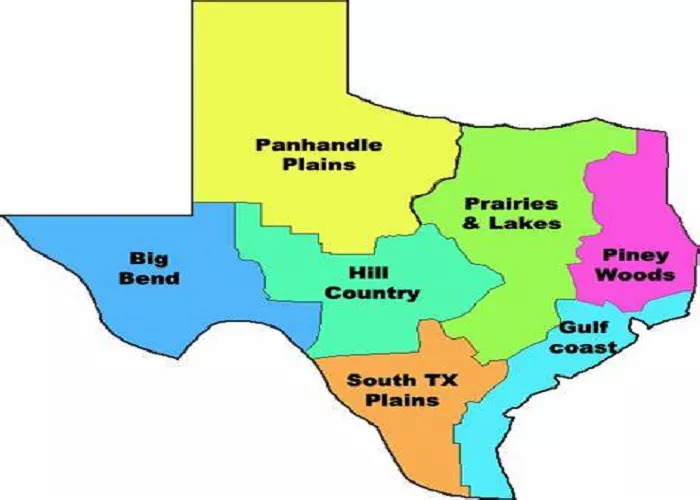Texas is a vast and diverse state, both in size and in its cultural, ecological, and economic landscapes. To better understand its complexity, Texas is often divided into several distinct regions. These regions help in understanding the state’s geography, culture, economy, and ecology.
What is Texas’s Regional Divisions
Texas doesn’t have a single official set of regions. Different organizations and studies define regions based on various criteria, such as geography, economy, or ecology. However, commonly recognized regions include:
- North Texas
- East Texas
- Central Texas
- South Texas
- West Texas
- Panhandle
- Gulf Coast
These broad regions can be further subdivided based on more specific characteristics.
Geographical Regions of Texas
North Texas
North Texas encompasses the Dallas-Fort Worth metroplex and surrounding areas. The region features rolling prairies and is a hub for commerce and industry.
East Texas
Known for its piney woods, East Texas has a humid climate and dense forests. The Big Thicket area, part of this region, is recognized for its biodiversity.
Central Texas
Central Texas includes the Hill Country, characterized by limestone hills and clear rivers. The area is known for its unique blend of cultures and growing wine industry.
South Texas
South Texas borders Mexico and includes the Rio Grande Valley. The region is largely bilingual and bicultural, with a strong Hispanic influence.
West Texas
West Texas is known for its desert landscapes and is part of the larger Food, Fuel, and Fiber Triangle, emphasizing its agricultural and energy contributions.
Panhandle
The Texas Panhandle is a flat, high plains region in the state’s north. It’s a significant area for agriculture and wind energy.
Gulf Coast
The Gulf Coast region includes the Texas Coastal Bend, featuring estuaries and barrier islands. Corpus Christi is the largest city in this area.
Cultural Aspects of Texas Regions
Each Texas region has its own cultural identity:
- North Texas: Urban and cosmopolitan, with diverse populations.
- East Texas: Deep-rooted traditions with a strong Southern influence.
- Central Texas: A mix of Southern and Southwestern cultures, with German and Czech heritage evident in local festivals and cuisine.
- South Texas: Predominantly Hispanic, with rich traditions in music, food, and festivals.
- West Texas: Reflects a rugged, frontier spirit, with strong ties to ranching and cowboy culture.
- Panhandle: Agricultural communities with a focus on family and faith.
- Gulf Coast: A blend of cultures influenced by proximity to the sea, with a strong emphasis on seafood cuisine and maritime traditions.
Economic Characteristics of Texas Regions
The economy of Texas is as diverse as its regions:
- North Texas: A major economic center with industries in technology, finance, and transportation.
- East Texas: Historically reliant on oil and timber, with growing sectors in manufacturing and healthcare.
- Central Texas: Home to a booming tech industry, especially in Austin, and a growing wine industry in the Hill Country.
- South Texas: Agriculture is prominent, with significant production of citrus fruits and vegetables. The region also benefits from cross-border trade with Mexico.
- West Texas: Dominated by oil and gas industries, along with cattle ranching and cotton farming.
- Panhandle: Agriculture is key, with large-scale production of wheat, corn, and beef.
- Gulf Coast: Petrochemical industries are significant, along with shipping and tourism.
Ecological Zones in Texas
Texas’s vast size results in diverse ecological zones:
- Piney Woods (East Texas): Dense forests with a variety of tree species.
- Edwards Plateau (Central Texas): Characterized by limestone hills and clear springs.
- South Texas Plains: Semi-arid with thorny shrubs and grasses.
- Trans-Pecos (West Texas): Desert landscapes with unique flora and fauna.
- High Plains (Panhandle): Flat grasslands suitable for agriculture.
- Gulf Coast Prairies and Marshes: Coastal wetlands with rich biodiversity.
Conclusion
Texas’s regional divisions offer a framework to understand its complex geography, culture, economy, and ecology. Recognizing these regions helps in appreciating the state’s diversity and planning for its future development.

